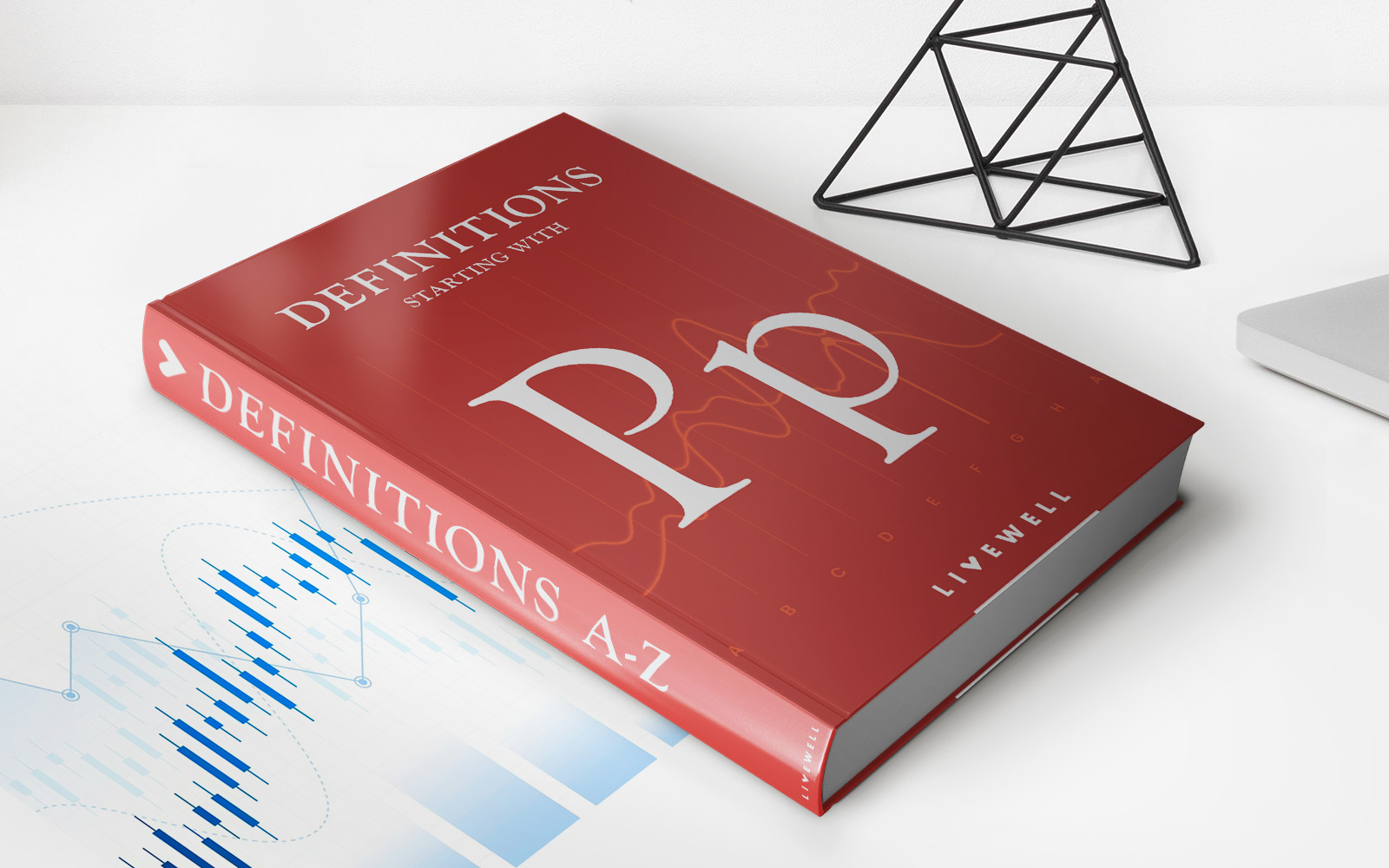Home>Finance>What Happens If I Exceed My 401K Contribution Limit


Finance
What Happens If I Exceed My 401K Contribution Limit
Modified: February 21, 2024
Learn about the consequences and penalties of exceeding the 401K contribution limit. Discover the finance implications of going over your allowed amount.
(Many of the links in this article redirect to a specific reviewed product. Your purchase of these products through affiliate links helps to generate commission for LiveWell, at no extra cost. Learn more)
Table of Contents
Introduction
Planning for retirement is a critical part of financial management, and a 401K account is a valuable tool for building a secure future. As an employee-sponsored retirement savings plan, a 401K allows individuals to contribute a portion of their salary on a pre-tax basis. However, it’s important to be aware of the 401K contribution limit set by the Internal Revenue Service (IRS).
The 401K contribution limit is the maximum amount an individual can contribute to their 401K account in a given year. For 2021, the limit stands at $19,500 for individuals under the age of 50. If you’re 50 years or older, you may be eligible to make additional “catch-up” contributions of up to $6,500, bringing your total allowable contribution to $26,000. These limits are subject to periodic adjustments by the IRS to account for inflation.
While it’s encouraged to take full advantage of the tax advantages and employer matching contributions provided by a 401K, it’s crucial to avoid exceeding the contribution limit. In this article, we’ll explore the consequences of surpassing the 401K contribution limit, the options for correcting excess contributions, tax implications, penalty charges, and strategies to prevent exceeding the limit in the first place.
Understanding the 401K Contribution Limit
The 401K contribution limit is imposed by the IRS to maintain the integrity and fairness of retirement savings plans. It serves as a safeguard to prevent individuals from disproportionately benefiting from the tax advantages associated with 401K accounts.
It’s important to note that the contribution limit applies to employee contributions, not employer contributions or other types of retirement accounts, such as a Traditional or Roth IRA. Individual contributions can be made on a pre-tax basis, meaning they are deducted from your taxable income, or on a post-tax basis, in which case they are treated as Roth contributions.
Contributions to a 401K plan are generally made through payroll deductions, allowing for convenience and consistency in savings. It’s crucial to monitor your contributions throughout the year to ensure they remain within the prescribed limits. This is especially important if you contribute to multiple 401K plans, such as from previous employers or due to a second job.
Furthermore, it’s worth mentioning that the 401K contribution limit applies on an individual basis. If you’re married and both you and your spouse are eligible to contribute to a 401K, the contribution limit applies to each of you individually. This means you can potentially double the tax-advantaged savings by maximizing contributions for both spouses.
Understanding the 401K contribution limit is essential for effective retirement planning. By staying within the prescribed limits, you can ensure the continued tax advantages, employer matching contributions, and the growth of your retirement nest egg. In the following sections, we’ll explore the consequences of exceeding the 401K contribution limit and the options available for correcting excess contributions.
Consequences of Exceeding the 401K Contribution Limit
While the 401K contribution limit is in place to prevent individuals from taking advantage of excessive tax benefits, it’s essential to understand the consequences of exceeding this limit. If you contribute more than the allowed amount to your 401K in a given year, you may face certain repercussions.
One immediate consequence of exceeding the 401K contribution limit is that the excess contribution is considered ineligible for tax advantages. Any amount beyond the limit will be treated as regular income and subject to income tax. This means that you won’t benefit from the tax-deferred growth and immediate tax savings on the excess amount.
In addition, exceeding the contribution limit can trigger penalties from the IRS. The excess contributions are subject to an excise tax, which is currently set at 6% of the excess amount. This penalty is levied annually until the excess contributions are resolved.
Moreover, the excess contributions could potentially disrupt the compliance of your entire 401K plan. The plan may lose its qualified status, leading to unfavorable tax consequences for both the plan participants and the employer sponsoring the plan.
It’s important to note that these consequences apply only to the excess contributions made for a specific year. The total amount in your 401K account that exceeds the annual contribution limit doesn’t incur penalties or lose tax advantages as long as it remains within the overall lifetime contribution limit, which is $1,000,000 as of 2021.
Understanding the consequences of exceeding the 401K contribution limit underscores the importance of monitoring your contributions and adhering to the prescribed limits. In the next section, we will discuss the options available for correcting excess contributions and mitigating the associated penalties.
Options for Correcting Excess Contributions
If you accidentally exceed the 401K contribution limit, it’s crucial to take immediate action to rectify the situation and mitigate potential penalties. The IRS provides several options for correcting excess contributions:
- Withdraw the excess contributions: The most straightforward option is to request a distribution of the excess amount from your 401K account. This withdrawal must be made before the tax filing deadline, including extensions, for the year in which the excess contributions were made. Keep in mind that the excess contributions that are withdrawn are still subject to income tax, but the 6% excise tax penalty can be avoided.
- Recharacterize the excess contributions: Alternatively, you may choose to recharacterize the excess contributions as contributions to a different type of retirement account, such as a Traditional IRA. This option allows you to preserve the tax advantages of the excess amount. Note that the recharacterization must be done by the tax filing deadline, including extensions, for the year in which the excess contributions were made.
- Apply excess contributions to a future year: If you realize the excess contributions early in the year, you may be able to apply the excess amount to the following year’s contributions. This option requires coordination with your employer and the plan administrator to ensure the excess amount is properly accounted for and applied to the correct year’s contributions.
- Request a corrective distribution: In some cases, you may be able to request a corrective distribution from your 401K plan administrator. This option is available if you discover the excess contributions after the tax filing deadline. However, keep in mind that corrective distributions may still be subject to income tax.
It’s important to consult with a financial advisor or tax professional to determine the best course of action based on your individual circumstances. They can guide you through the process and help you choose the option that minimizes penalties and maximizes your retirement savings.
Now that we’ve explored the options for correcting excess contributions, let’s delve into the tax implications of exceeding the 401K contribution limit in the next section.
Form 1099-R and Tax Implications
When you exceed the 401K contribution limit and need to correct the excess contributions, it’s important to understand the tax implications of these actions. One key document that comes into play is Form 1099-R.
Form 1099-R is a tax form used to report distributions from retirement accounts, including 401Ks. If you withdraw or recharacterize the excess contributions, you will receive a Form 1099-R from your plan administrator, which indicates the amount of the distribution and other relevant information. You must include this information on your tax return when filing for the corresponding tax year.
When you receive a Form 1099-R for excess contributions, it will typically be coded as an “excess deferral distribution” or a “return of excess deferral.” This coding distinguishes the distributed amount from regular contributions and earnings from your 401K account. The excess contributions reported on Form 1099-R will be subject to income tax in the year of distribution.
If you choose to recharacterize the excess contributions into a Traditional IRA, you will receive a Form 5498 from the IRA custodian. This form reports the recharacterized amount and provides information for reporting on your tax return.
It’s important to accurately report the excess contributions and any associated distributions on your tax return to avoid potential penalties or audits from the IRS. Consult with a tax professional or tax software to ensure that you properly report the information from your Form 1099-R or Form 5498.
Additionally, keep in mind that any earnings generated from the excess contributions while they were in your 401K account will also be subject to income tax when distributed or recharacterized.
Understanding the tax implications and carefully reporting the excess contributions and any associated distributions on your tax return is crucial to maintaining compliance with IRS regulations. In the next section, we will discuss the penalty charges that may apply when you exceed the 401K contribution limit.
Penalty Charges for Excess Contributions
Exceeding the 401K contribution limit can result in penalty charges imposed by the IRS. These penalties are intended to discourage individuals from contributing more than the allowed limit and to maintain the integrity of retirement savings plans. Understanding the potential penalty charges is crucial to avoiding unnecessary financial setbacks.
The penalty charges for excess contributions come in the form of an excise tax. Currently, the IRS imposes a 6% excise tax on the excess amount contributed to your 401K account. This penalty is assessed annually as long as the excess contributions remain in the account.
It’s important to note that the 6% excise tax is separate from the income tax you may owe on the excess contributions. The excess contributions are treated as regular income and subject to income tax in the year they were contributed, while the 6% excise tax applies to the excessive amount remaining in the account.
To calculate the excise tax, you need to identify the excess contributions and the taxable year they relate to. The excess contribution for each year is the amount that exceeds the maximum allowable limit ($19,500 for those under 50 years old in 2021). Once you determine the excess contribution, you can apply the 6% excise tax on that amount.
It’s worth mentioning that correcting excess contributions by withdrawing or recharacterizing the funds before the tax filing deadline can help you avoid the 6% excise tax penalty. However, you may still owe income tax on the excess amount withdrawn, depending on the type of correction and the timing of the distribution.
It is recommended to consult with a tax professional or financial advisor if you find yourself in a situation where you have exceeded the 401K contribution limit. They can guide you through the necessary steps to rectify the excess contributions and help you minimize the associated penalty charges.
Now that we understand the penalty charges for exceeding the 401K contribution limit, let’s delve into strategies to avoid exceeding the limit in the first place in the next section.
Strategies to Avoid Exceeding the Contribution Limit
To prevent inadvertently exceeding the 401K contribution limit, it’s crucial to implement sound strategies and stay mindful of your contributions throughout the year. Here are some effective strategies to help you avoid surpassing the limit:
- Monitor your contributions: Regularly review your paycheck and ensure that your 401K contributions align with your desired amount. Keep track of your contributions from all sources, including previous employers or second jobs, to ensure you don’t exceed the annual limit.
- Calculate catch-up contributions: If you’re 50 years or older and eligible for catch-up contributions, calculate the maximum amount you can contribute, including the regular limit and the catch-up limit. This will help you stay within the overall contribution limit for your age group.
- Coordinate with your spouse: If both you and your spouse contribute to a 401K, coordinate your contributions to maximize the tax advantages while staying within the individual contribution limits. This allows you to double the benefit of tax-advantaged savings for both spouses.
- Opt for automated contributions: Enroll in automatic contributions through your employer’s payroll system. This ensures a consistent and accurate deduction from each paycheck, reducing the likelihood of exceeding the limit unknowingly.
- Set up contribution alerts: Utilize online tools or notifications provided by your employer to receive alerts when your contributions approach the annual limit. This helps you stay vigilant and make adjustments as needed.
- Manage previous employer accounts: If you have 401K accounts from previous employers, consider consolidating them into a single account to simplify tracking your contributions and minimize the risk of exceeding the limit across multiple accounts.
- Be aware of employer matching: While it’s advantageous to maximize your employer’s matching contributions, be mindful of the timing and amount to ensure you don’t inadvertently exceed the annual limit.
By implementing these strategies, you can maintain compliance with the 401K contribution limit while taking full advantage of the tax benefits and employer matching contributions. It’s also important to regularly review and update your retirement plan as needed based on your financial situation and retirement goals.
Let’s conclude the article with a summary of the key points discussed.
Conclusion
Understanding and adhering to the 401K contribution limit is essential for effective retirement planning. While a 401K account offers valuable tax advantages and potential employer matching contributions, exceeding the contribution limit can have serious consequences.
If you exceed the 401K contribution limit, you may face tax implications, penalty charges, and even jeopardize the compliance of your entire retirement plan. However, there are options available to correct excess contributions, such as withdrawing the excess amount or recharacterizing it into a different retirement account.
It’s important to be aware of the reporting requirements and tax implications associated with excess contributions, which can be reflected on Form 1099-R. Accuracy in reporting is crucial to avoid potential penalties or audits from the IRS.
To prevent exceeding the contribution limit in the first place, implement strategies such as monitoring your contributions, coordinating with your spouse if applicable, and utilizing automated contributions. Being mindful of employer matching contributions and managing previous employer accounts also contributes to staying within the limits.
Consulting with a financial advisor or tax professional can provide valuable guidance and ensure compliance with IRS regulations. They can assist in strategizing and making informed decisions that align with your individual circumstances and retirement goals.
By understanding the 401K contribution limit and taking proactive steps to prevent exceeding it, you can optimize your retirement savings, enjoy the tax advantages, and build a secure future for yourself and your loved ones.














